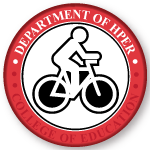Author ORCID Identifier
Document Type
Article
Publication Date
2-23-2012
Publication Title
Hypertension Research
Volume
35
First Page
667
Last Page
672
Abstract
Obesity is associated with early cardiovascular dysfunction and reduced muscle strength. Whole-body vibration (WBV) training may improve arterial function and muscle strength. The effects of WBV training on arterial stiffness (brachial-ankle pulse wave velocity, baPWV), wave reflection (augmentation index, AIx), brachial systolic blood pressure (bSBP), aortic systolic blood pressure (aSBP), heart rate variability, and muscle strength (one-repetition maximum, 1RM) were examined in 10 young (21±2 year) overweight/obese women (body mass index, BMI=29.9±0.8 kg m–2). Participants were randomized to a 6-week WBV training or non-exercising control (CON) period in a crossover design. WBV training (3 days × week) consisted of static and dynamic squats and calf raises with vibration intensity at 25–30 Hz and 1–2 mm amplitude (2.83–4.86 G). There were significant (P<0.05) decreases in baPWV (−0.9±0.3 m s–1), AIx (−8.0±2.2 %), bSBP (−5.3±1.5 mm Hg), aSBP (−5.2±2.1 mm Hg), low-frequency power (−0.13±0.05 nu) and sympathovagal balance (LF/HF, −0.42±0.16) after WBV training compared with CON. Significant (P<0.05) increases in high-frequency power (HF, 0.19±0.04 nu) and leg extension 1RM (8.2±2.3 kg) occurred after WBV training compared with CON. Six weeks of WBV training decreased systemic arterial stiffness and aSBP via improvements in wave reflection and sympathovagal balance in young overweight/obese normotensive women. WBV training may benefit arterial function and muscle strength in deconditioned individuals who cannot perform conventional exercise.
Recommended Citation
Figueroa, A., Gil, R., Wong, A. et al. Whole-body vibration training reduces arterial stiffness, blood pressure and sympathovagal balance in young overweight/obese women. Hypertens Res 35, 667–672 (2012). https://doi.org/10.1038/hr.2012.15


Comments
This version of the article has been accepted for publication, after peer review (when applicable) and is subject to Springer Nature’s AM terms of use, but is not the Version of Record and does not reflect post-acceptance improvements, or any corrections. The Version of Record is available online at: https://doi.org/10.1038/hr.2012.15
Publisher holds a Bespoken License